Protective Garden
Our gardens can help protect us from air pollution and allergens and filter or mask intrusive noise. Plants are constantly hard at work, shielding us from noise and pollution and improving our environment.
Trees and shrubs, for instance, can trap harmful particles in the air caused by vehicle emissions, and research shows that greening up any surface—a wall, roof, or fence—will help reduce the levels of particulates in your protective garden.
You can use plants to protect against noise pollution, too, while natural sounds, such as rustling plants or a tinkling water feature, can mask traffic and other sounds outside your garden.
As well as shielding you from particulates and noise, plants can help minimize the pollen and allergen presence in your garden, allowing you to enjoy your outside space all year round, even if you suffer from hay fever.
It is also essential to protect the wildlife in your garden by avoiding the use of pesticides and chemicals and adopting a wildlife-friendly, integrated approach to pest control that will be healthier for you, your garden, and the environment.
Plants as potential pollution-busters Vegetation can capture harmful pollutant particles and help to direct them away from people.
Many of us are regularly exposed to airborne pollutants such as industrial processes, gasoline and diesel engines, and fossil fuel burning.
Study shows that plants can seize pollutant particles, otherwise known as particulates, on their leaves, extracting them out of circulation and bettering local air quality.
You can harness this for your own outdoor space, using trees, hedging, and shrubs to create a barrier against pollutants.
If the area is at a premium, climbers, trailing plants, and living walls or roofs offer alternative options.
How do leaves trap particles?
All leaves trap small amounts of air pollutants, but some plants outperform others. Studies have found that those with hairy, scaly, waxy, and rough leaves are particularly effective.
Recent research showed that a yew canopy, for example, can accumulate four times more fine airborne particles than photinia, which has smoother leaves and is less dense.
Likewise, the larger surface areas of complex leaf shapes are more effective than simpler ones. The amount each plant can trap depends on the concentration of pollutants in the air, humidity, wind speed and direction, and temperature.
Why it matters? World Health Organization claims that 90 % of the world’s population breathe polluted air. Air pollution is linked to rising respiratory diseases, cancer, stroke, heart disease, diabetes, obesity, dementia, and early death.
Miniature, ultrafine air pollution particles are the most dangerous, penetrating lung tissue to enter the bloodstream and even pregnant women’s placentas.
Which Greenery is Best for Protective Garden?
Trees planted in wide strips next to busy roads can be very effective at trapping toxic particles, with some high-performing tree species removing up to 20 times more particles than others.
In Beijing, research showed that trees in the city center locked away 851 tons (772
tonnes) of particulate matter in a single year.
In broad, tree-lined streets, tree canopies create air turbulence beneath them and
allow pollutant particles to be deposited onto leaf surfaces. The remaining particles disperse upward on the air currents.
But in “street canyon” scenarios, avenues of large trees can worsen air pollution’s effects.
The “street canyon” effect An avenue of large trees in a “street canyon,” where tall buildings line both sides of a narrow road, can worsen pollution at street level.
Large tree canopies prevent pollutants emitted by traffic from dispersing into the air higher up (small trees may not have this effect).
In these settings, hedges can outperform trees (see opposite). Hedges form a barrier that
traps particles while allowing dispersal of toxic fumes.
Research in 2018 found that roadside hedges could cut black carbon (a sooty black material in emissions) by up to 63 percent, while roadside trees alone did not reduce pollution at breathing height.
Why plants outperform fences
Compared to a fence panel, hedges, with their multiple leaf surfaces and greater depth, offer a much larger area to trap particles.
The leaf-area index system demonstrates this: it calculates how many square meters a plant would cover if the leaves from a 1sq m (11sq ft) area of the plant were laid side by side on the ground (see right).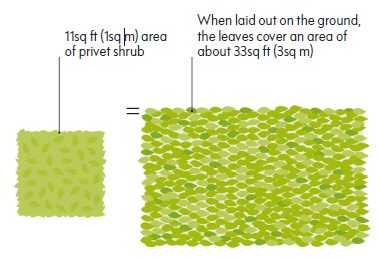
Some species trap particulates on both sides of their leaves, increasing the quantity they filter from the air.
CLEANER AIR AT GROUND LEVEL
A hedge barrier is effective from ground level, particularly beneficial for children, who are at greater risk because they are nearer to the ground and the source of emissions.
MAXIMIZE YOUR HEDGE’S EFFECTIVENESS
Healthy hedges with plenty of leaf cover will usually be better than a fence at trapping
pollution.
Some leaf types are more effective than others, so your choice of the plant will
have an impact on your hedge’s efficiency as a pollution barrier.
The condition of your hedge, its height, width, and density are also important
factors (see below).
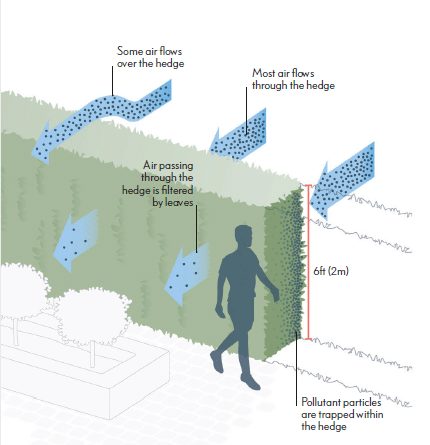
Good maintenance of Protective Garden
Pruning helps keep hedges dense, which is important for creating the maximum surface
area onto which pollutant particles can attach. It will also help to keep the hedge’s shape
compact and bushy at the base.
If you want a formal hedge, you’ll need to trim it two or three times in the growing season.
For informal hedges, an annual trim should be enough.
The timing depends on the plant type, but all hedges benefit from pruning right after planting to encourage them to grow out as well as up.
A well-grown hedge will support wildlife, so avoid pruning between March and August
to avoid disturbing nesting birds.
Choosing your hedge for Protective Garden
Look for plants that naturally make dense barriers, as they create a network of branches
for capturing particles. The six examples are shown opposite all performed well in scientific studies examining their pollution-fighting potential.
If these plant types aren’t suitable for your space and growing conditions, look for ones with similar characteristics, such as leaf type.
Although deciduous shrubs and trees lose their leaves annually, some, such as hornbeam,
can hold their leaves until late winter. Evergreen hedges, such as cotoneaster and holly, keep their coverage year-round.
GOOD PERFORMERS
Research is still ongoing into which plants are best at capturing pollutants, but these plants are so far among the best performers.
DECIDUOUS
1 Hawthorn (Crataegus monogyna) has dark red berries in fall.
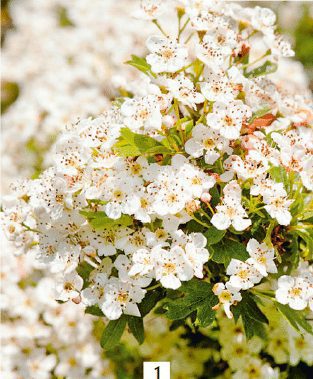
2 Hornbeam (Carpinus betulus) has yellow foliage in fall.
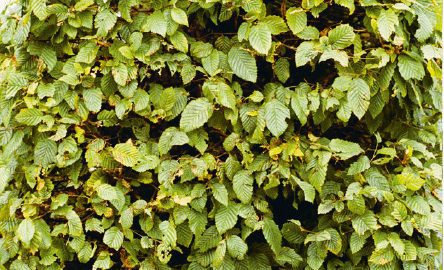
3 Japanese barberry (Berberis thunbergii)
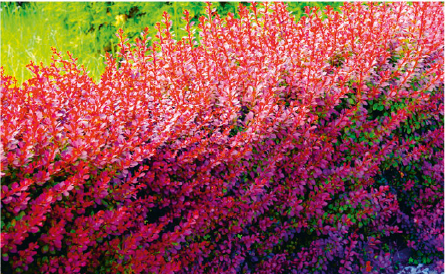
Other options
Flowering currant (Ribes), bird cherry (Prunus padus), dogwood (Cornus)
EVERGREEN Protective Garden
4 Cotoneaster (Cotoneaster franchetti) has orange-red fruit in fall.
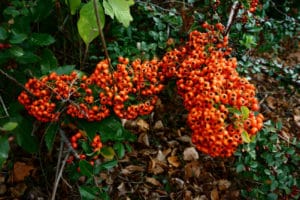
5 English yew (Taxus baccata) needs clipping only once a year.
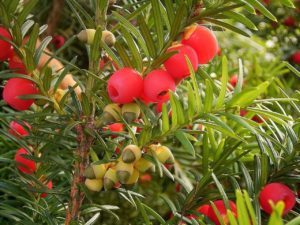
6 Holly (Ilex aquifolium) has bright red berries on female plants in the fall.
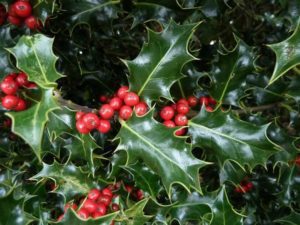
Other options Boxwood (Buxus sempervirens), laurustinus (Viburnum tinus), spindle
(Euonymus japonicus), western red cedar (Thuja plicata), firethorn (Pyracantha)
Planting a double hedge makes perfect Protective Garden
Plant shrubs in two rows to help create a dense hedge base. Line up the plants in the second row to offset the gaps in the first row.
The planting distance depends on the size of the plants and what species you choose.
Beech, for example, needs about 2ft (60cm) between plants, as shown below.




























Comments are closed.